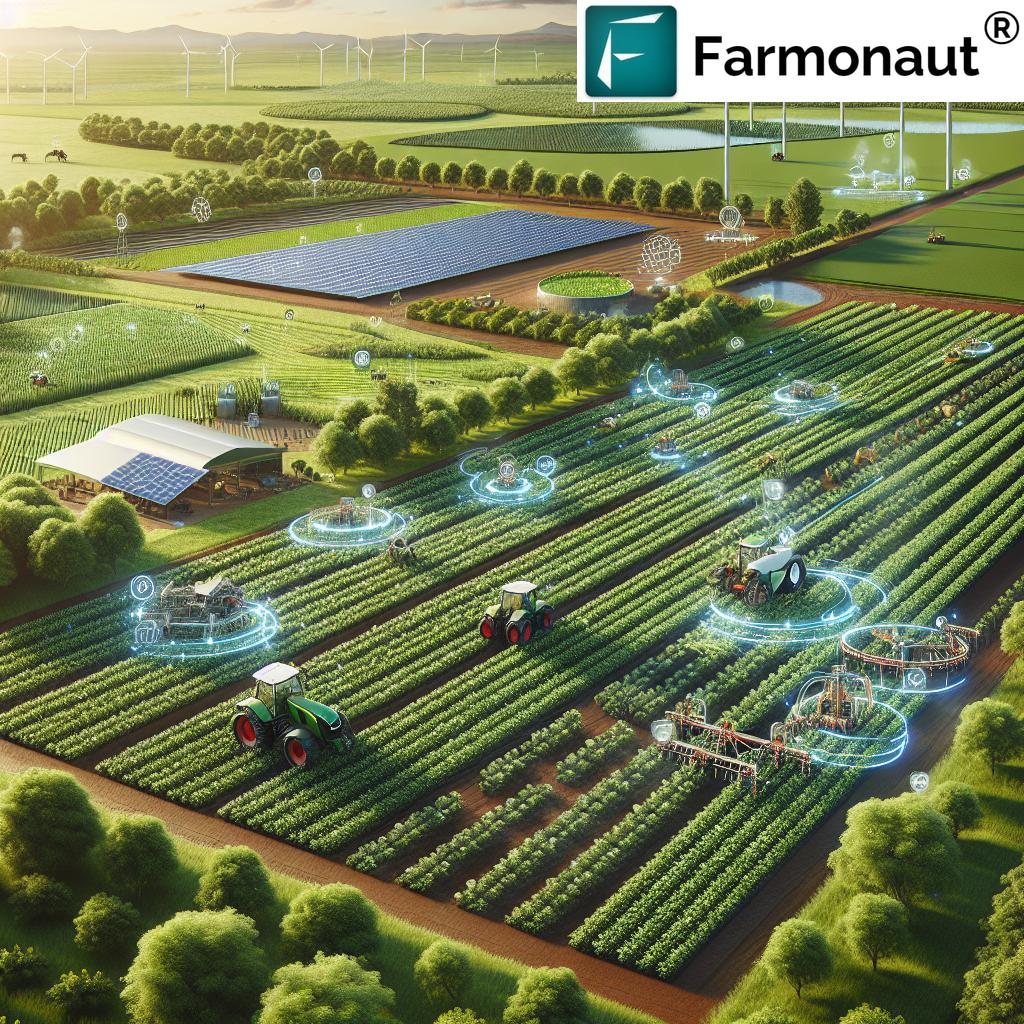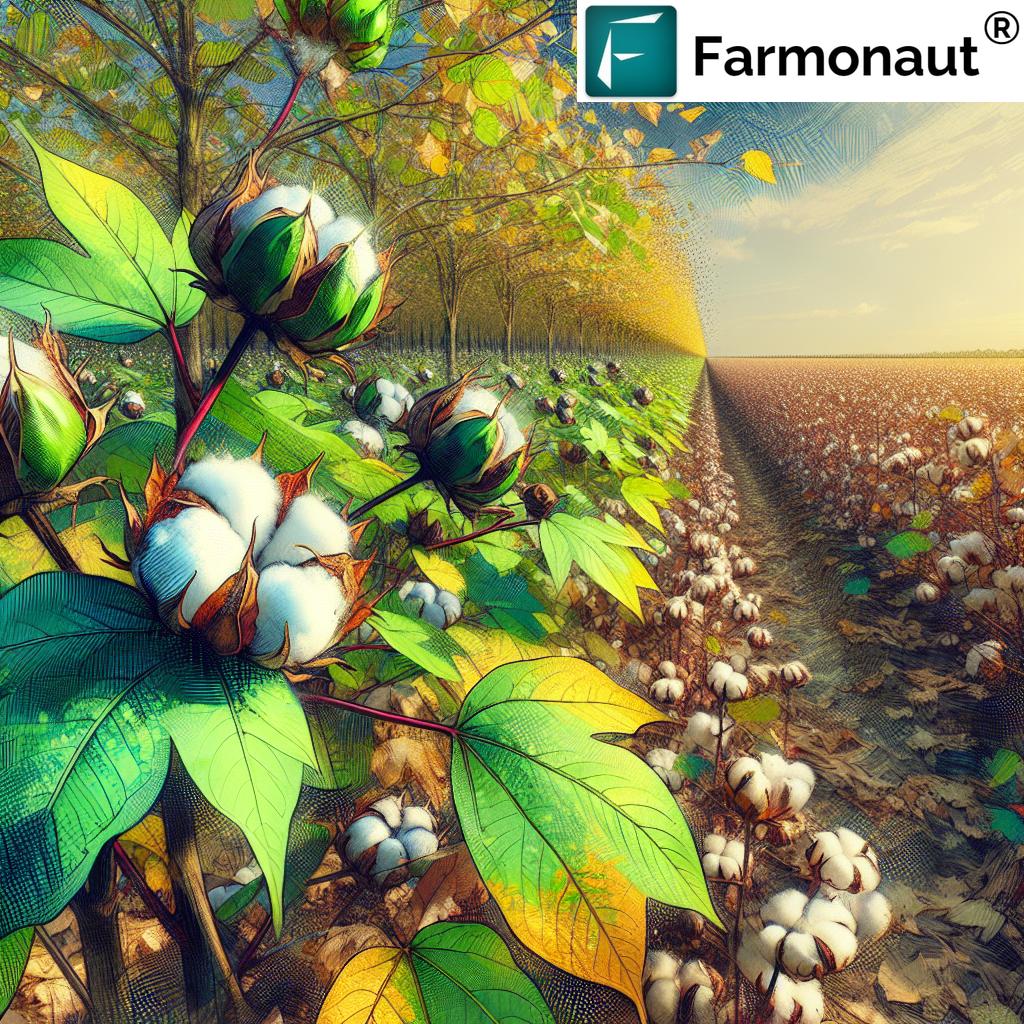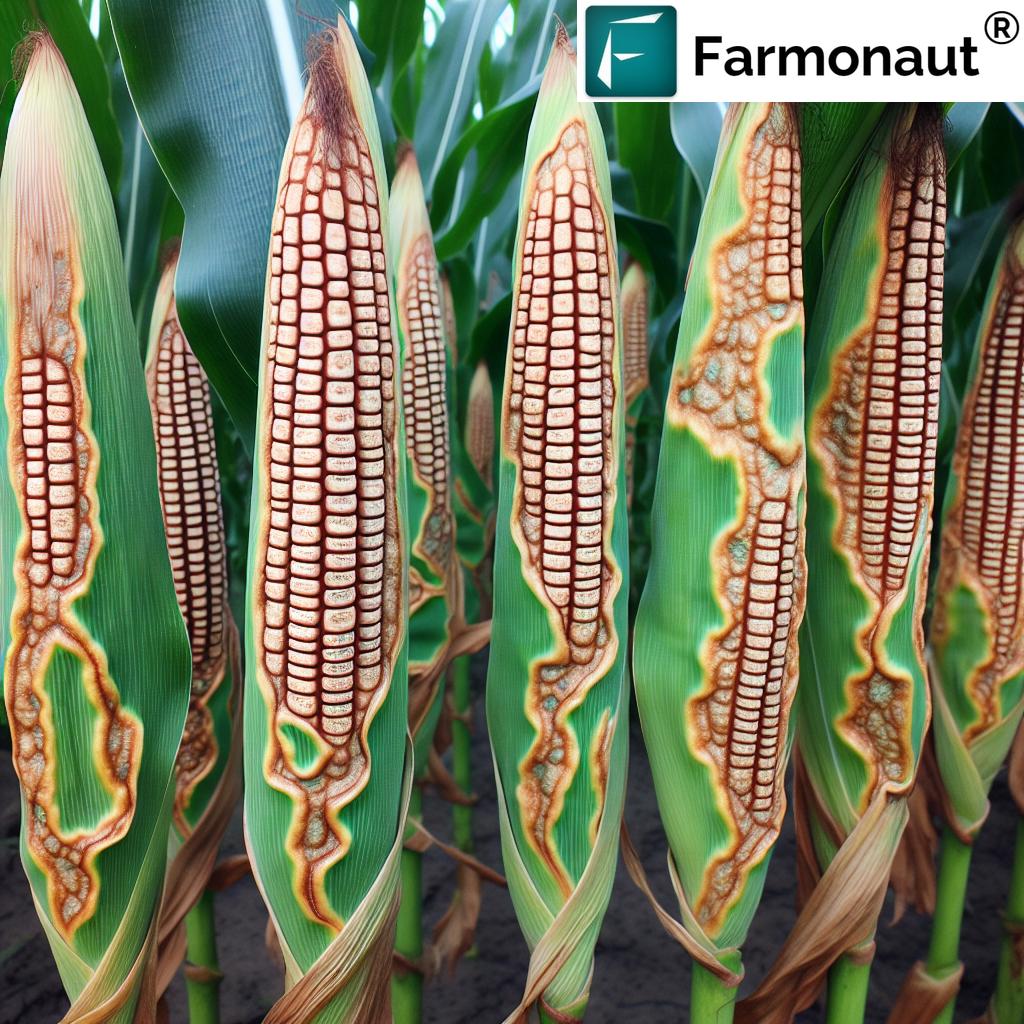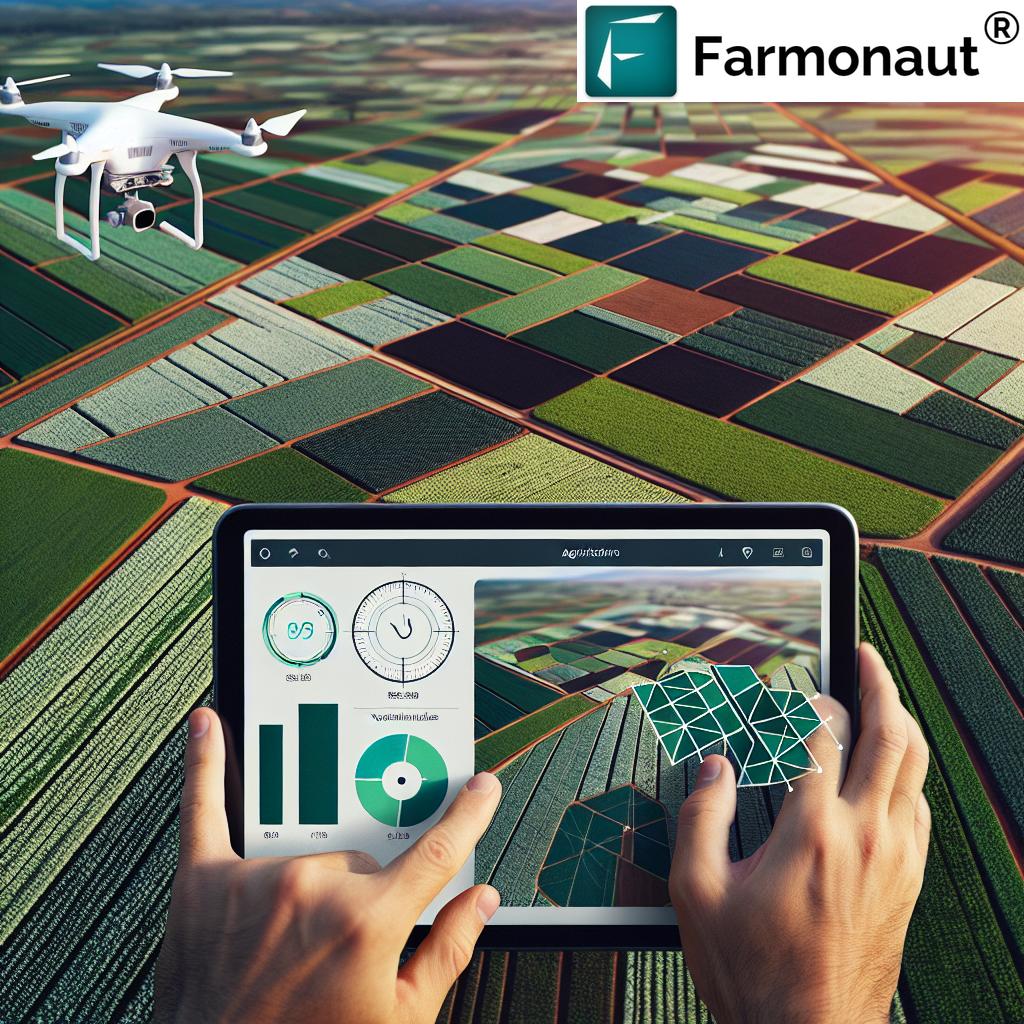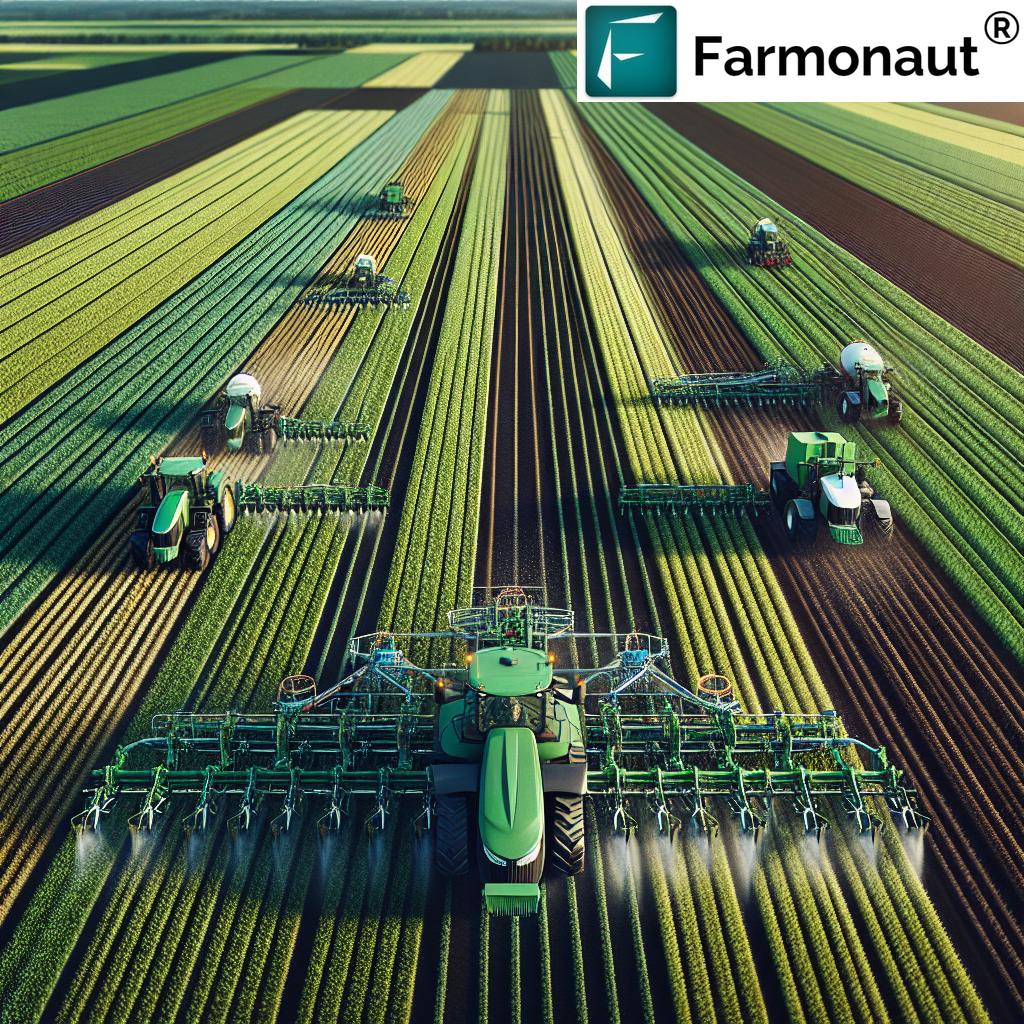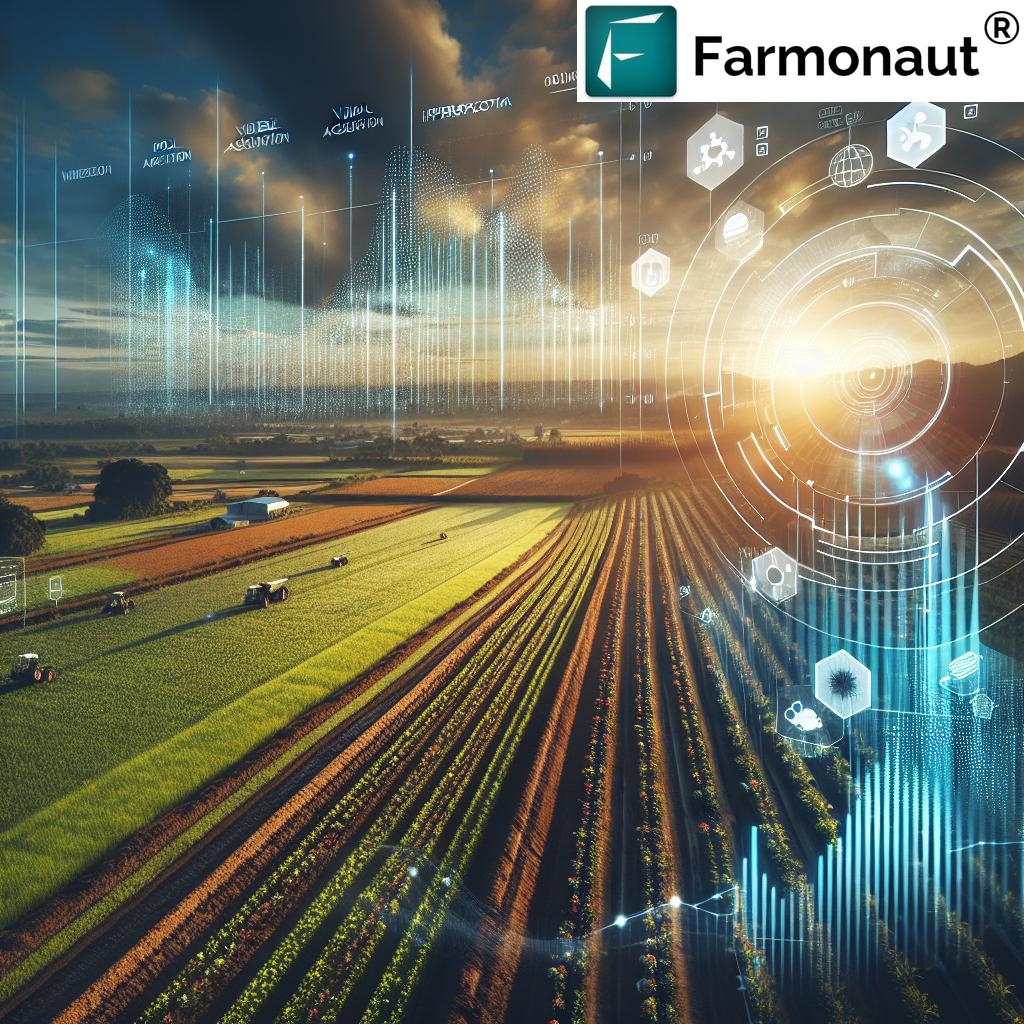Table of Contents
- Introduction
- What is Precision Farming with IoT?
- 7 Powerful Innovations in Precision Farming with IoT for 2025
- Comparison Table: IoT Innovations in Precision Farming 2025
- Why Precision Farming with IoT Matters in 2025 and Beyond
- How Farmonaut Empowers Future-Ready Smart Farming
- Frequently Asked Questions (FAQ)
- Conclusion
“By 2025, over 80% of new farm equipment is expected to feature built-in IoT connectivity for precision farming.”
Precision Farming with IoT: 7 Powerful Innovations for 2025
In recent years, the agriculture sector has witnessed a technological revolution driven by the Internet of Things (IoT). As we move toward 2025, precision farming with IoT is rapidly transforming traditional agriculture, empowering farmers to utilize smart data, networked devices, and connected platforms to optimize every aspect of their fields.
This comprehensive article explores how agriculture with IoT is enabling precision, enhancing productivity, minimizing waste, and advancing sustainability. We’ll examine the core concepts, the seven most powerful IoT-based precision agriculture innovations anticipated for 2025, their impacts on yield and environmental outcomes, and the ways companies like Farmonaut are making the future of smart farming a reality.
Understanding Precision Farming with IoT in 2025
Precision farming with IoT (also known as iot based precision agriculture) refers to the integration of smart devices, sensors, robots, and cloud-based platforms to collect, monitor, and analyze real-time data about crops, soil, weather, and field resources. The goal is to maximize yields, minimize waste, and promote sustainable agricultural practices by making every farming action measurable and optimizable.
- Measure and monitor variability: IoT-powered sensors continuously gather data about soil moisture, nutrient levels, crop health, weather conditions, and more. This lets farmers precisely track variability across different field zones.
- Automate tasks: Autonomous robots and machines, guided by IoT data, perform seeding, weeding, fertilizing, and harvesting with minimal human intervention, increasing accuracy and lowering labor costs.
- Optmize resource use: Dynamic control of irrigation, fertilization, pest management, and harvesting reduces input costs, environmental impact, and ensures each plant gets exactly what it needs—no more, no less.
- Enable data-driven decision making: Cloud platforms and mobile dashboards provide actionable insights to help farmers adjust management strategies based on live and historical data trends.
- Enhance sustainability: Precision in inputs, early issue detection, and remote monitoring together help improve environmental sustainability and climate resilience.
Why Is IoT So Transformative in Agriculture?
The role of IoT in agriculture is so pivotal because it turns the farm into a connected ecosystem where every plant, each patch of soil, and all resources can be probed, measured, and managed digitally—enabling precise control of every variable impacting productivity, sustainability, and profitability.
“Smart sensors can monitor up to 50 different field variables in real time, optimizing crop management through data-driven innovation.”
7 Powerful Innovations in Precision Farming with IoT for 2025
Let’s explore the seven most impactful IoT advancements for precision farming projected to define the future of agriculture in 2025 and beyond.
- Smart Field Sensors & Environmental Monitoring
- AI-Powered Agricultural Drones
- Automated IoT-Based Irrigation Management
- Precision Farming Robots and Autonomous Machinery
- Satellite & Blockchain Integration for Traceability
- Cloud-Based IoT Platforms and AI Advisory Systems
- Advanced Carbon & Water Footprint Management
1. Smart Field Sensors & Environmental Monitoring
Smart sensors are the backbone of smart farming with IoT. These low-power, ruggedized devices are deployed across farmlands, embedded in soil, or attached to crops, livestock, and even farm structures. As of 2025, networked systems regularly collect data on up to 50 field variables: moisture, nutrient levels, pH, temperature, humidity, plant health, and weather.
- Real-time, continuous measurement allows highly targeted management of resources.
- Early detection of anomalies—such as nutrient deficiencies, disease onset, or drought stress—empowers proactive interventions that minimize losses and maximize yields.
- Environmental monitoring with IoT sensors supports sustainable practices: preventing over-irrigation, enabling optimal fertilization, and reducing the risk of runoff or pollution.
Example Applications of Smart Sensors:
- Soil Moisture Probes: Guide automated irrigation scheduling by relaying real-time moisture levels to central platforms.
- Weather Sensors: Predict extreme events, measure microclimate variations, and synchronize field activities.
- Plant Health Sensors: Detect signs of disease or pest attack even before they become visually apparent.
For more on remote and AI-powered soil health monitoring, see our Crop, Plantation & Forest Advisory resources.
2. AI-Powered Agricultural Drones
Drones are the airborne eyes and hands of future-ready farms. By 2025, AI-driven drones are equipped with multispectral cameras, thermal sensors, and real-time data transmitters that help collect data, monitor field variability, and perform targeted actions such as pinpoint spraying and crop health analysis.
- High-frequency, high-coverage scouting: Drones scan large fields in minutes, providing detailed spatial datasets unattainable manually.
- AI analytics: Multispectral and infrared imaging detects diseases, pest hotspots, and nutrient stress long before yield loss occurs.
- Precision application: Drones deliver pesticides or nutrients only where needed, reducing input waste and environmental impact.
Learn more about the transformative impact of agri-drones in our platform’s fleet management solutions, which help automate and optimize drone use across vast farming operations.
3. Automated IoT-Based Irrigation Management
Smart irrigation systems use embedded soil moisture sensors, weather data integration, and predictive analytics to automate and optimize water use. As water scarcity is a critical global challenge, this innovation is among the most urgently needed in agriculture.
- Dynamic irrigation schedules are based on real-time soil and weather data—water is delivered only when and where crops need it.
- Remote control: Farmers can monitor and adjust irrigation from anywhere via mobile apps or IoT dashboards.
- Conservation: Smart irrigation can reduce water use by 30–50%, avoiding both over- and under-watering and reducing groundwater depletion.
- Yield stability: Crops receive optimal hydration, improving resilience in the face of climate variability.
Farmonaut’s satellite-driven insights and water footprinting tools play a key role in helping farms track irrigation patterns and optimize water consumption. Explore our carbon & water footprinting solutions for actionable, real-time environmental tracking.
4. Precision Farming Robots and Autonomous Machinery
The precision farming robot is one of the biggest breakthroughs in iot based precision agriculture. Combining autonomous navigation, real-time sensor data, and AI-driven controls, these field robots conduct essential tasks—seeding, weeding, fertilizing, harvesting—with high accuracy and minimal human intervention.
- Advanced sensors (GPS, cameras, multispectral): Allow robots to analyze real-time field conditions and make targeted decisions at a plant-by-plant scale.
- Reduced input costs, minimal waste: Robots deliver pesticides/fertilizers only where necessary, reducing chemical use, runoff, and soil degradation.
- Continuous operation: Autonomous robots can work around the clock, compensating for labor shortages and maximizing harvest efficiency.
- Data-driven operations: Each action is documented, analyzed, and refined using IoT data, leading to ongoing improvement and adaptation in future cycles.
For large-scale and smallholder farms alike, robotization means greater resilience, resource savings, and higher yields.
5. Satellite & Blockchain Integration for Product Traceability
The next leap in iot based precision agriculture is integrating satellite monitoring and blockchain technology for end-to-end traceability and transparency.
- Satellite imagery and IoT sensors verify crop origin, field management practices, and farming conditions at every stage.
- Blockchain records ensure that this information is secure, transparent, and immutable—building trust in food supply chains.
- Supply chain compliance: Producers and buyers can instantly certify the environmental and social credentials of products—from farm to fork.
Discover how secure traceability is reshaping agrifood markets by visiting our traceability solutions page.
6. Cloud-Based IoT Platforms & AI Advisory Systems
Modern cloud platforms are crucial to smart farming with IoT. These systems integrate sensor data streams, apply machine learning, and serve actionable insights via web/mobile dashboards.
- Unified control: Farmers access all data, receive adaptive recommendations, and monitor field conditions remotely—increasing efficiency.
- AI-based alerts: Cloud-hosted algorithms detect anomalies, suggest interventions, automate workflows, and optimize resource use in real time.
- Mobile accessibility: With 5G and expanding rural internet, precision farming is becoming truly location-agnostic and more inclusive.
Our large-scale farm management platform exemplifies this shift by centralizing operations, advanced analytics, and real-time satellite insights for enterprises and agribusinesses.
7. Advanced Carbon & Water Footprint Management Tools
The push for environmental sustainability in agriculture means new attention to carbon accounting, water conservation, and proactive management of field-level environmental impact.
- IoT devices and satellites now monitor emissions, energy use, and soil health, giving farmers the insights to adopt regenerative practices and comply with evolving green finance and regulatory standards.
- Automated carbon reporting: Yield, input, and operational data are combined to calculate carbon footprints and sequestration rates, supporting sustainable branding and market access.
Farmonaut’s advanced carbon & water footprinting platform helps farms track, verify, and reduce environmental impacts with unprecedented precision.
Comparison Table: IoT Innovations in Precision Farming 2025
| Innovation Name | Brief Description | Key IoT Feature | Estimated Yield Improvement (%) | Estimated Waste Reduction (%) | Sustainability Impact |
|---|---|---|---|---|---|
| Smart Field Sensors | Real-time measurement of soil, weather, and crop health variables | Continuous, multi-variable sensing | +20% | -25% | High |
| AI-Powered Drones | Aerial mapping, crop scanning, and targeted application | Geospatial imaging, AI analytics | +15% | -30% | High |
| Automated Irrigation | Smart, adaptive water management using real data | Embedded soil moisture probes | +18% | -50% | High |
| Precision Farming Robots | Autonomous seeding, weeding, fertilizing, and harvesting | Robotic AI, GPS, multispectral sensors | +22% | -40% | High |
| Satellite & Blockchain Traceability | Verified food origin, compliance, and sustainability records | Satellite imaging, blockchain ledger | +8% | -12% | High |
| Cloud IoT & AI Platforms | Centralized analytics, remote control, and decision support | Cloud, AI decision support | +17% | -18% | High |
| Carbon & Water Footprint Management | Real-time monitoring of sustainability markers | IoT carbon sensors, satellite tracking | +10% | -20% | High |
Why Precision Farming with IoT Matters in 2025 and Beyond
Adopting precision farming with IoT is no longer just about boosting yields—it’s about ensuring the long-term sustainability and food security of a growing planet. Here’s how:
- Optimize every input: Fertilizer, water, seed, and pesticide (inputs) are expensive. IoT technologies make sure every drop, granule, and seed is used with maximum efficiency.
- Reduce waste, minimize costs: Data-driven control reduces unnecessary or excessive application—saving money and the environment.
- Promote ecosystem health: By reducing runoff and pollution, smart practices benefit not just crops but the biodiversity of the farm ecosystem.
- Build climate resilience: Timely interventions and adaptive management help stabilize yields even with unpredictable weather patterns.
- Democratize technology access: As costs drop and cloud/mobile apps become commonplace, the smallest farms can join the digital revolution.
- Enable transparent, trustworthy supply chains: Consumers and buyers increasingly demand sustainability and traceability—a demand IoT makes possible to fulfill.
How Farmonaut Empowers Future-Ready Smart Farming
At Farmonaut, our mission is to democratize access to advanced geospatial, IoT, and AI-based solutions for precision farming, making satellite-driven insights affordable and actionable for businesses, users, and governments worldwide as we move into 2025 and beyond.
- Satellite-Based Monitoring: We leverage multispectral satellite imagery (NDVI, soil condition mapping), combined with other IoT data, to provide 24/7 insights on crop health, field variability, and resource use—helping farmers monitor, measure, and optimize decisions for every season.
- Jeevn AI Advisory System: Our AI system delivers real-time, context-aware advisory based on live sensor and satellite datasets. Farmers get tailored weather alerts, disease/pest warnings, and best-practice recommendations to maximize productivity and sustainability.
- Blockchain Traceability Solutions: We ensure food and resource traceability through secure, blockchain-powered authentication—building trust and enabling compliance with evolving sustainability standards. See how traceability can differentiate your farm products.
- Fleet and Resource Management Tools: Our platform allows farms and agribusinesses to track machinery, drones, and fleets in real-time, optimizing logistics, reducing operational risks, and driving cost savings. Learn more about fleet management in smart agriculture.
- Environmental Impact Tracking: Our carbon and water footprinting modules empower farms to monitor, report, and improve sustainability. This supports everything from green finance access to meeting supply chain requirements. Explore our environmental tools.
- Scalable, Affordable Access: Through our web, iOS, Android apps, API integrations (API details here, see API documentation), and modular subscription plans, we make smart agriculture with IoT accessible to all—from smallholders to multinationals.
Frequently Asked Questions (FAQ) – Precision Farming with IoT
What is precision farming with IoT?
Precision farming with IoT refers to using interconnected sensors, devices, and cloud platforms to monitor, analyze, and optimize all aspects of farming operations—soil, crops, irrigation, nutrient management, and more—to maximize yields and sustainability.
Which are the top IoT advancements in agriculture for 2025?
The top IoT advancements include smart field sensors, AI-powered drones, automated irrigation systems, precision farming robots, satellite-enabled traceability, cloud-based AI platforms, and carbon/water footprinting modules. Each enables higher yield, less waste, and improved environmental outcomes.
How does IoT help with water conservation in farming?
IoT-enabled irrigation relies on real-time measurements of soil moisture, weather forecasts, and predictive models to deliver precise amounts of water only when needed. This conserves water, prevents over- or under-irrigation, and stabilizes crop productivity during drought or stress.
What is the role of Farmonaut in IoT-powered agriculture?
Farmonaut provides satellite-based monitoring, AI advisory, blockchain traceability, fleet/resource management, and sustainability analytics to help agricultural users of all scales harness IoT and precision farming techniques for higher efficiency and climate resilience.
Can small farms benefit from smart farming with IoT?
Absolutely. With user-friendly apps, affordable subscriptions, and modular technologies, IoT precision farming is accessible to smallholder farmers. It ensures every input counts, reduces costs, and increases yields—regardless of farm size.
How do precision farming robots reduce environmental impact?
Precision farming robots apply inputs only where and when needed, mechanically weed (reducing herbicide reliance), and optimize every field pass. This minimizes chemical runoff, preserves soil health, and maximizes sustainability in modern agriculture.
How secure is data and traceability in smart farming systems?
By using blockchain and encrypted platforms, farm data and traceability records are protected, tamper-proof, and transparent. This fosters trust across supply chains and with consumers demanding responsible food production.
The Future of Smart Agriculture: Embracing Precision, Connectivity & Sustainability
As we look to 2025 and beyond, precision farming with IoT will set the standard for data-driven, connected, and sustainable agriculture. From smart sensors and autonomous robots to cloud platforms, AI advisory systems, and blockchain traceability—these technologies hold the key to feeding a growing world responsibly.
At Farmonaut, we are committed to making cutting-edge precision agriculture tools accessible and effective for everyone—enabling smarter farming decisions, higher crop productivity, less waste, and a better future for both farmers and the environment. Whether you are a smallholder, agribusiness, researcher, or policymaker, the time to adopt smart farming with IoT is now.
Ready to experience the future of precision farming? Get started with our platform now or download the Farmonaut mobile app for real-time, actionable insights!
For developers and businesses: Explore our API and developer documentation to integrate Farmonaut’s precision farming insights directly into your digital solutions.




